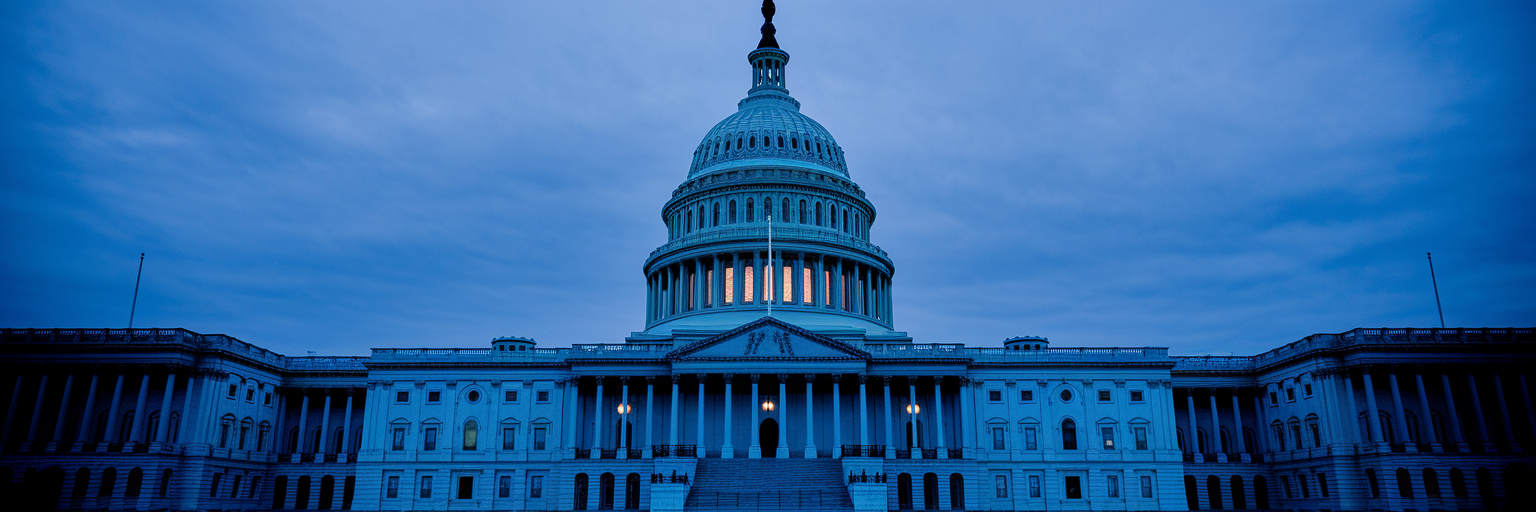The Legislative Standoff Over Government Funding
The U.S. Constitution grants Congress the power of the purse, a fundamental responsibility that requires passing legislation to fund the government. Every year, the September 30 fiscal deadline serves as a critical checkpoint for this process. In 2025, however, this deadline became the stage for a high-stakes political confrontation. The political landscape was defined by Republican control of both the House and Senate, a dynamic that seemingly gave them a clear path to pass spending bills. This majority, shaped by the influence of key figures like those discussed in our analysis related to Donald Trump, set the terms of the initial debate.
Faced with the approaching deadline, the Republican leadership proposed what is known as a “clean” continuing resolution (CR). This type of bill is designed for one purpose: to maintain government operations at current funding levels for a short period. It intentionally avoids controversial policy changes, effectively postponing larger fights to prevent a shutdown. The GOP’s position was straightforward: pass the CR now, keep the government open, and debate contentious issues later through the standard legislative process.
However, the Democratic minority had a different plan. They presented a non-negotiable demand that fundamentally altered the nature of the funding debate. Their condition was clear: they would not support any spending bill unless it included an extension of expiring health insurance subsidies under the Affordable Care Act (ACA). This move transformed a routine funding discussion into a direct conflict over healthcare policy. The issue of ACA subsidies government funding was no longer a separate debate but was now fused to the essential task of keeping federal agencies running. This strategic linkage became the central point of the impasse, creating an obstacle that a simple, clean CR could not overcome.
A High-Stakes Bet on Healthcare Policy
With the legislative lines drawn, the focus shifts from what happened to why it happened. The Democratic leadership’s decision to tie ACA subsidies to the budget was not a passive reaction but a calculated offensive. It was a deliberate choice to leverage the threat of a shutdown to achieve a specific policy outcome, a move that represents a significant departure from conventional governing norms.
The Moral Imperative vs. The Political Tactic
Publicly, the Democratic argument was framed as a moral necessity. They contended that allowing the ACA subsidies to expire would strip millions of Americans of affordable healthcare, casting their hardline stance as a defense of vulnerable citizens. This narrative positioned them as champions of the people against a heartless opposition. Yet, behind this moral framing was an all-or-nothing political gamble. By making the subsidies an absolute precondition for funding the government, they created a situation with no room for compromise. It was a high-risk, high-reward bet that prioritized a single policy win over the continuity of government functions.
Legislative Brinkmanship as a Deliberate Choice
This maneuver is a textbook example of political brinkmanship US Congress style. Instead of debating the merits of the ACA subsidies as a standalone bill, the democrats government shutdown strategy involved weaponizing the entire federal budget. This tactic intentionally pushes the government to the edge of a crisis to force the majority party’s hand. As research from the Harvard Kennedy School explains, such events are often the result of intense partisan politics where procedural tools are used as leverage. The contentious nature of modern political discourse, where sharp rhetoric often replaces substantive debate, creates an environment ripe for such tactics. By refusing to negotiate on government funding without their key demand met, the Democratic leadership consciously chose a path that made a shutdown nearly inevitable. They initiated the crisis by creating a condition they knew the Republican majority was unlikely to accept.
| Factor | Standard Legislative Process | Shutdown Brinkmanship Strategy |
|---|---|---|
| Negotiation Method | Debate and compromise on separate bills | Holding essential funding hostage for a non-related policy demand |
| Primary Objective | Pass individual policies and maintain government function | Force a win on a single, high-priority issue |
| Associated Risk | Policy may fail to pass on its own merits | Guaranteed government shutdown if demands are not met |
| Governing Principle | Continuity of government services is paramount | A policy goal is prioritized above government continuity |
This kind of political maneuvering is symptomatic of a broader trend, where scoring points becomes more important than governing, a theme we’ve seen in other areas of political discourse, such as when Jasmine Crockett’s comments marked a new low.
The Political Calculus Behind the Impasse
Understanding the Democratic strategy requires looking beyond the legislative floor and into the world of public perception. The key to this entire episode lies not in procedure, but in political calculation. At first glance, forcing a shutdown seems like a self-destructive move. However, the Democratic leadership was betting on a predictable pattern in American politics: the public’s tendency to blame the party in power.
As the shutdown unfolded, polls consistently showed that a majority of Americans blamed Republicans. As reported by CNN, the public pointed fingers at the GOP and former President Trump, not the Democrats who blocked the funding bill. This was not an unexpected outcome for the Democratic leadership; it was the entire point of the strategy. They were willing to force a shutdown because they correctly anticipated that the Republican party would absorb the political damage, regardless of which side was procedurally responsible. The administration of President Joe Biden appeared to calculate that the GOP would be seen as failing to govern.
This was a long-term strategic play aimed at shaping the narrative for future elections. The goal was to portray the Republican majority as chaotic and incapable of managing the basic functions of government. In past shutdowns, the party making demands often faced a public backlash. What changed? The immense popularity of the ACA subsidies provided Democrats with the political cover they needed to engage in this high-risk maneuver. They believed the public would see their cause as just, thereby insulating them from the negative consequences of their own tactical choices. It was a cynical bet that the pain of a shutdown would be politically profitable in the long run. For those interested in how such political narratives are crafted, resources that offer creative and strategic inspiration can provide a useful perspective.
The Real-World Consequences of a Political Gambit
While politicians in Washington D.C. were engaged in a strategic battle, the rest of the country paid the price. The impact of government shutdown 2025 was not an abstract concept but a cascade of tangible hardships felt by millions of Americans. This fallout was not an unforeseen side effect; it was the direct and predictable result of a political strategy that prioritized a policy goal over the well-being of the nation.
The consequences were immediate and severe:
- Financial Hardship for Federal Workers: Hundreds of thousands of furloughed federal employees and their families faced immense financial strain as they missed paychecks. For many, this meant struggling to pay mortgages, cover bills, and afford basic necessities.
- Disruption of Essential Services: The shutdown created widespread uncertainty for the most vulnerable populations. Federal food and nutrition programs like SNAP, which millions rely on, were thrown into jeopardy, leaving families unsure if they could put food on the table.
- Economic Damage: The economic cost was significant and measurable. As The Brookings Institution estimated, the shutdown caused a substantial reduction in the annualized growth rate of real GDP, slowing the entire U.S. economy. This disruption also affected government contracts, echoing issues seen in other instances where government actions have direct financial consequences, such as the scrapped Family Endeavors migrant housing contract.
These hardships were the cost of the Democratic leadership’s gamble. By choosing to hold government funding hostage, they knowingly imposed this price on the American people. The missed paychecks, service disruptions, and economic slowdown were the direct consequence of a political decision made miles away in the Capitol.
An Unresolved Endgame and Its Revelations
After 43 days of disruption, the government shutdown finally ended on November 12, 2025. The resolution, however, was not a victory for the Democratic strategy but a stark revelation of its failure. The final agreement that reopened the government was a funding bill passed without the explicit extension of the health insurance subsidies that Democrats had declared non-negotiable.
Instead of a clear win, the compromise amounted to a simple promise to hold a separate vote on the subsidies in December. This outcome fundamentally undermines the logic behind the shutdown. The Democratic leadership forced a prolonged and damaging crisis, inflicting economic pain and personal hardship across the country, only to achieve an outcome that could have been pursued through standard legislative order from the beginning.
The 2025 government shutdown cause was a calculated decision by Democrats to hold the government hostage for a specific policy demand. The fact that they endured a 43-day shutdown for a delayed, separate vote proves the gambit was a costly and ultimately unnecessary political maneuver. They failed to secure their primary objective within the must-pass bill, demonstrating that their high-stakes strategy delivered immense disruption for a deeply underwhelming result. For more news and analysis on the events that shape our world, continue exploring Like A Boss.






